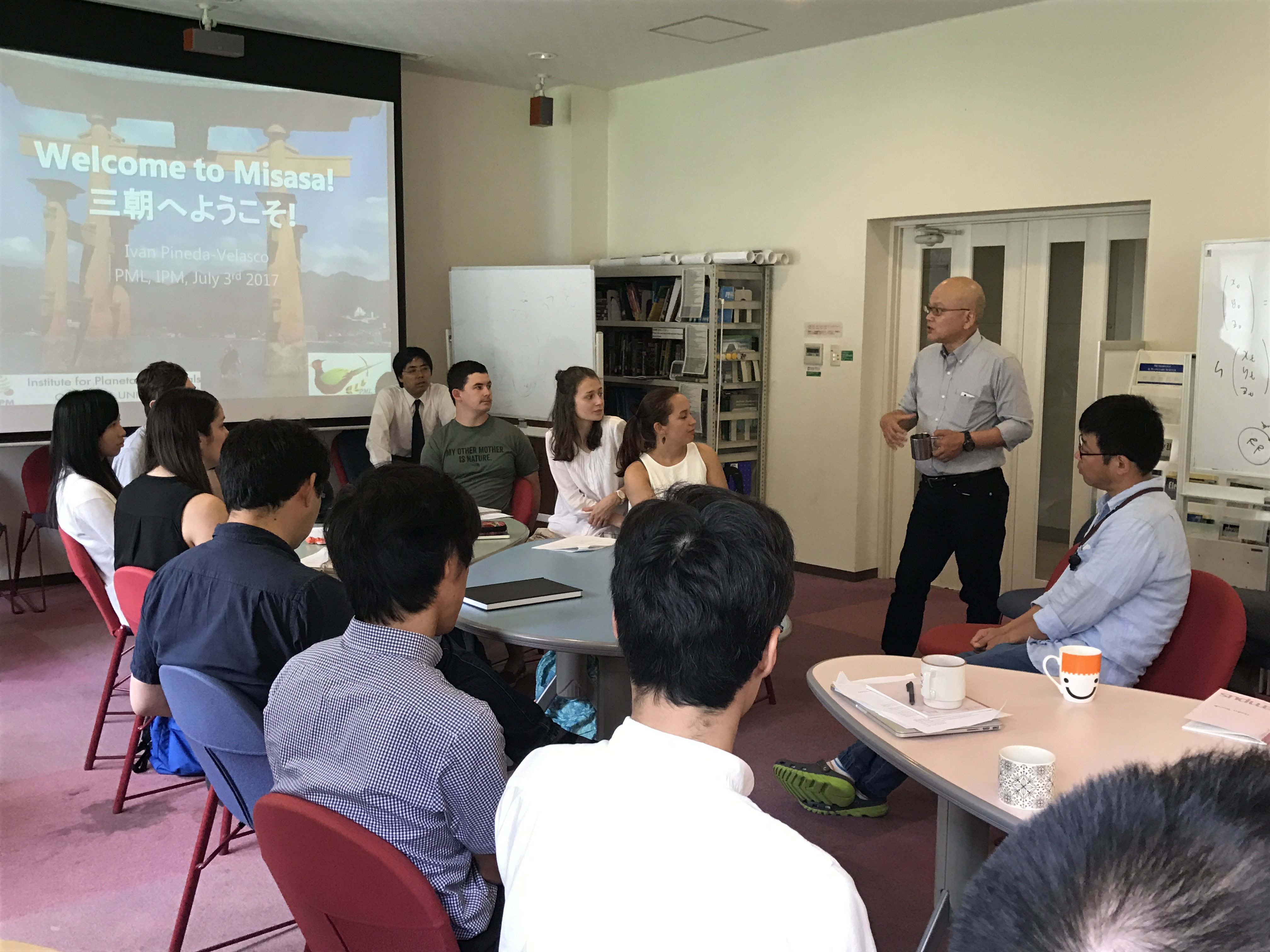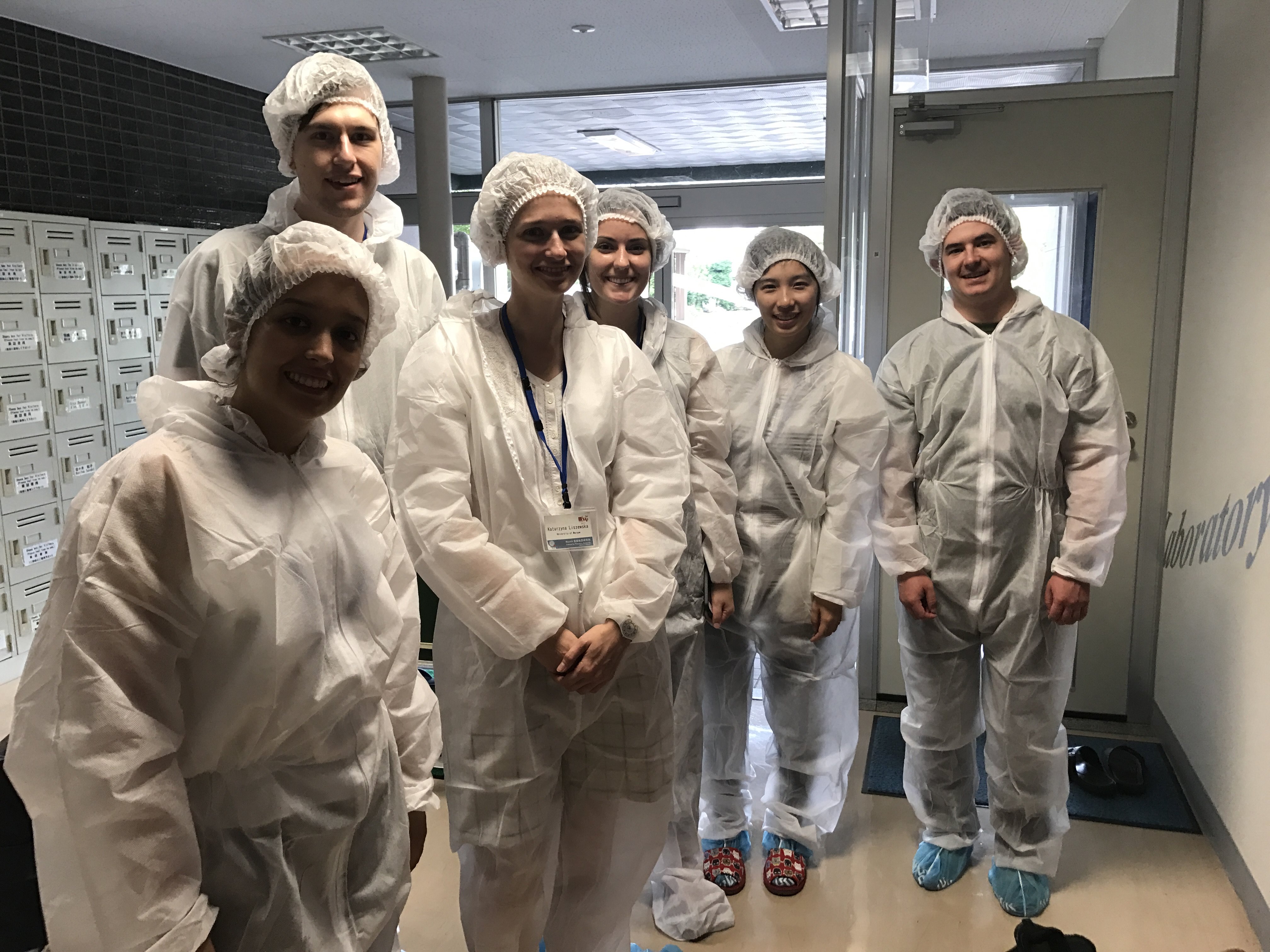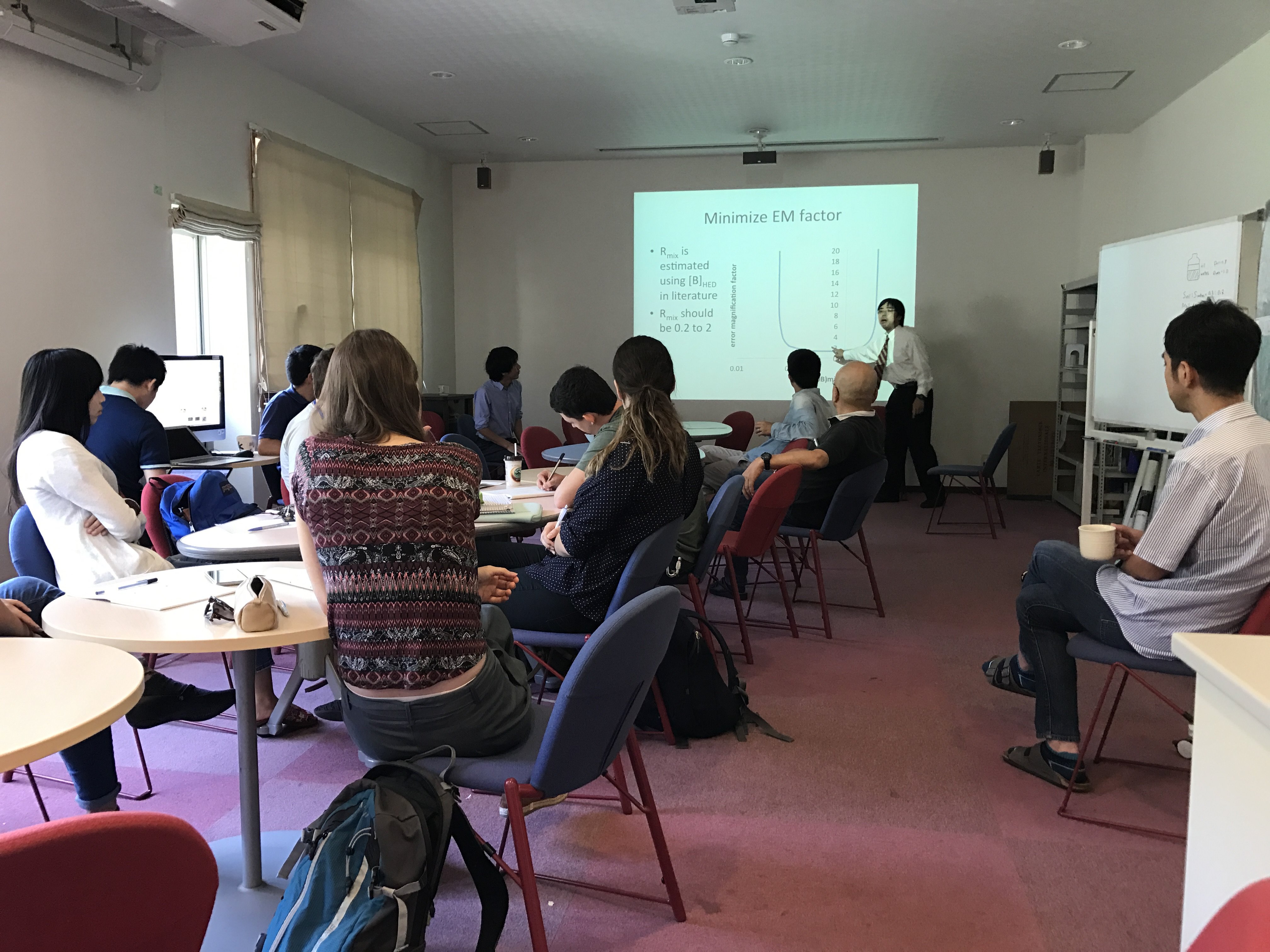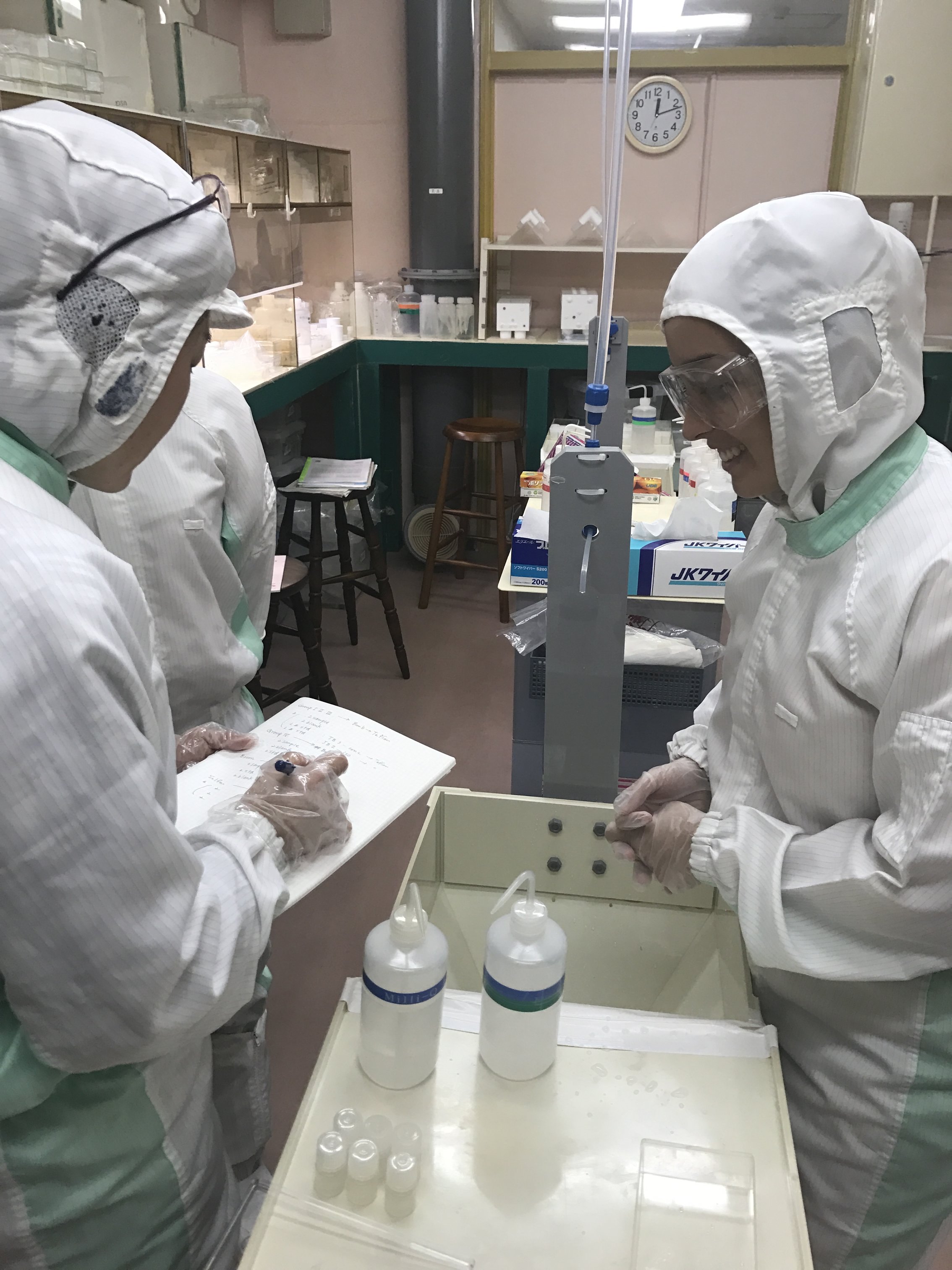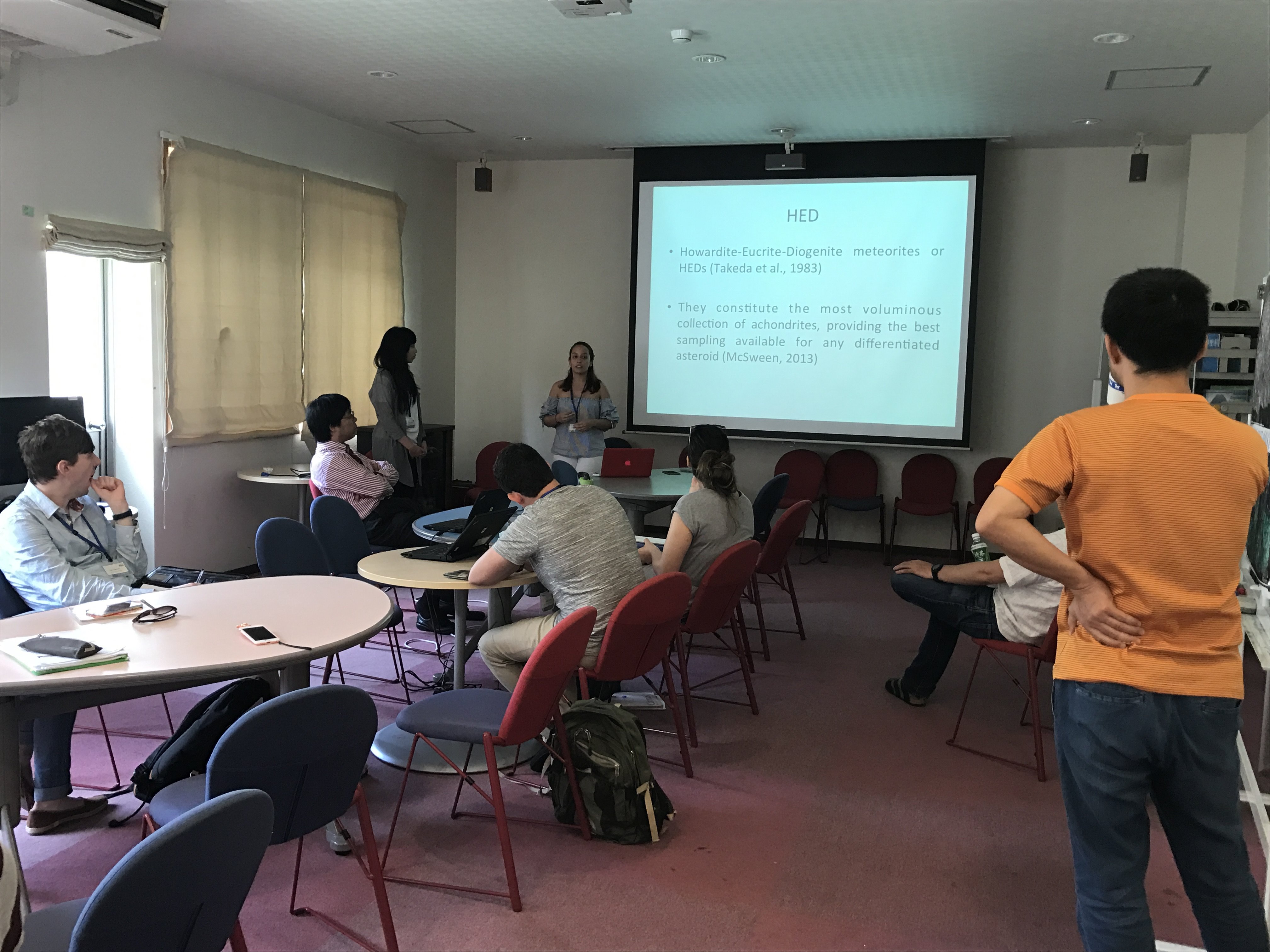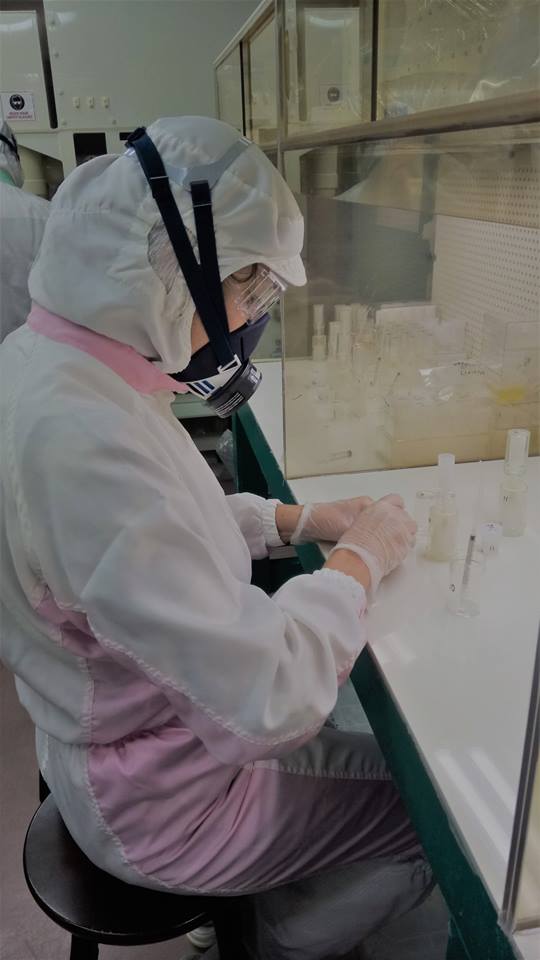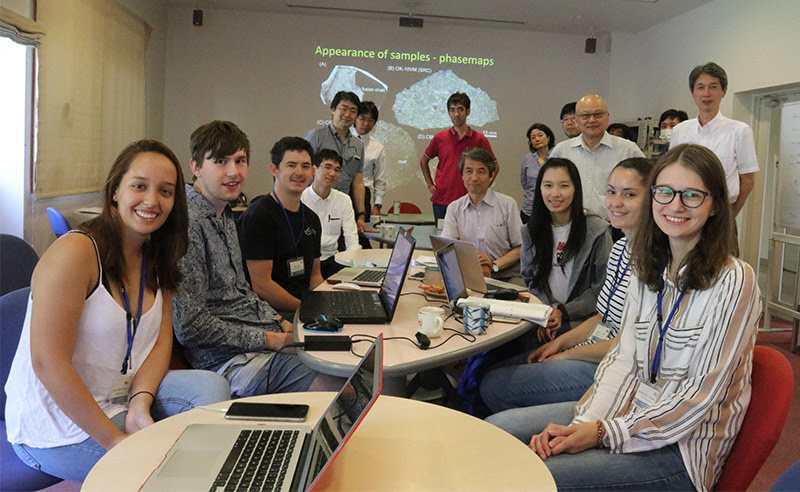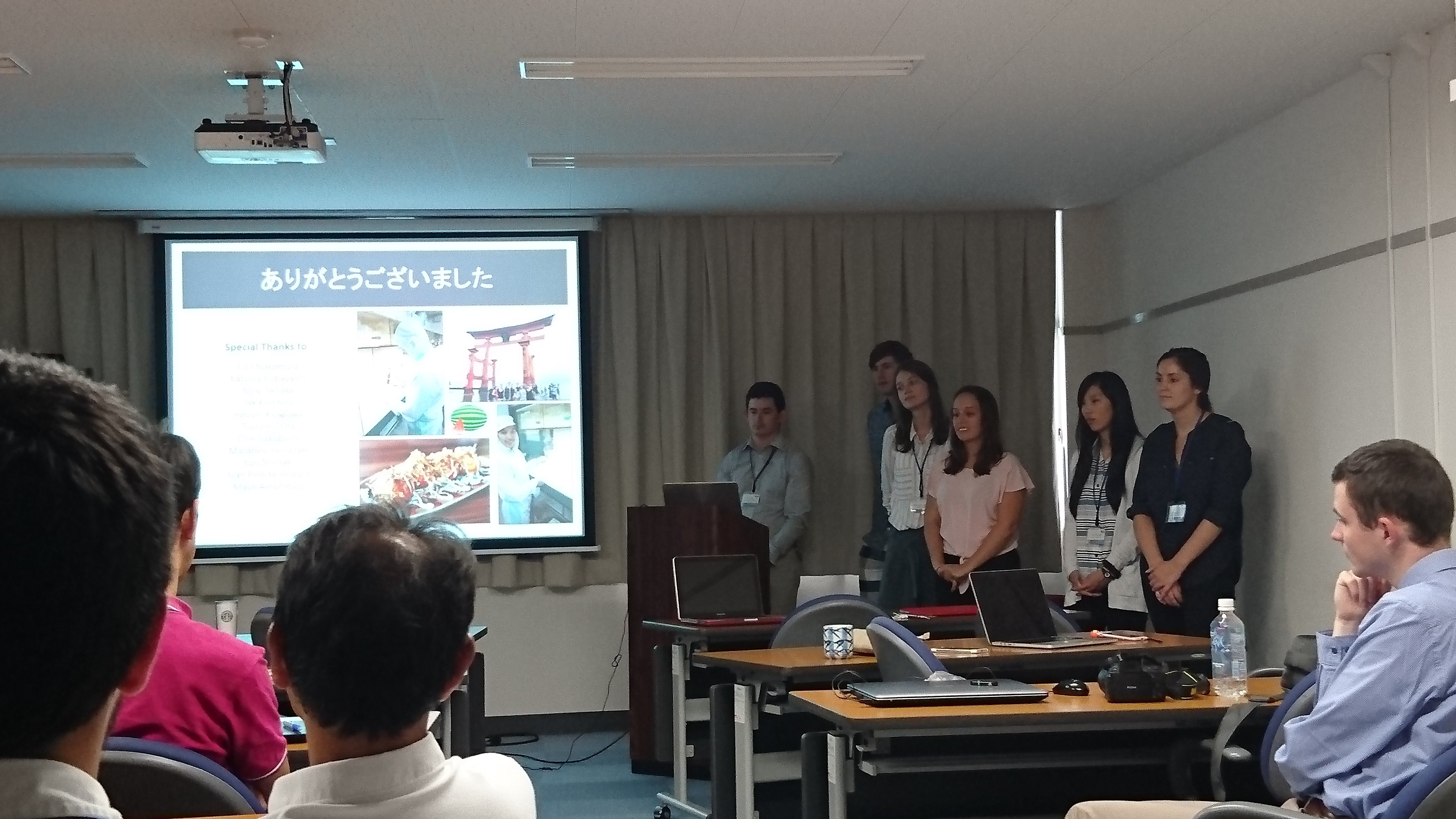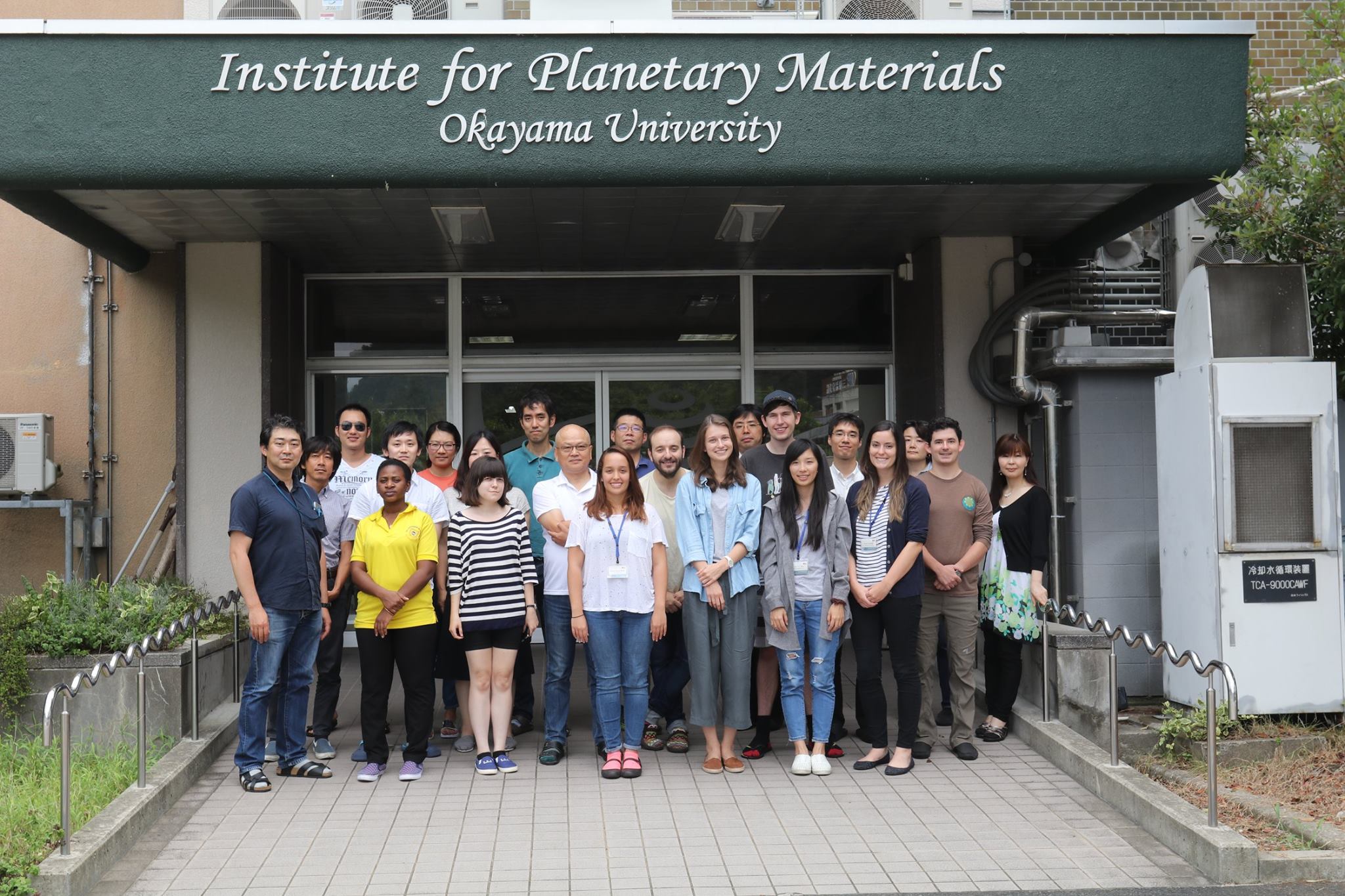MISIP 2017: "Basalt from Vesta: Major and Trace Element Heterogeneity Preserved on the Surface of the Asteroid"
Misasa International Students Intership Program 2017 Participants
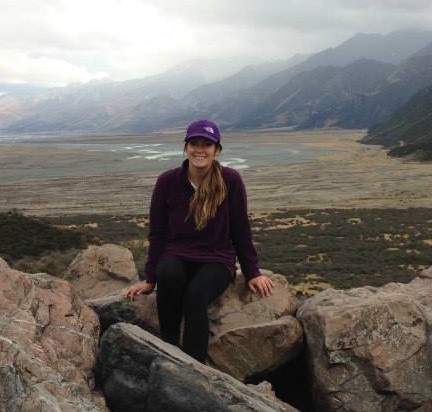
Tanya Kizovski
Canada
University of Toronto

Sam Edwards
Canada
University of Toronto

Chad Dodge
United States of America
California State University
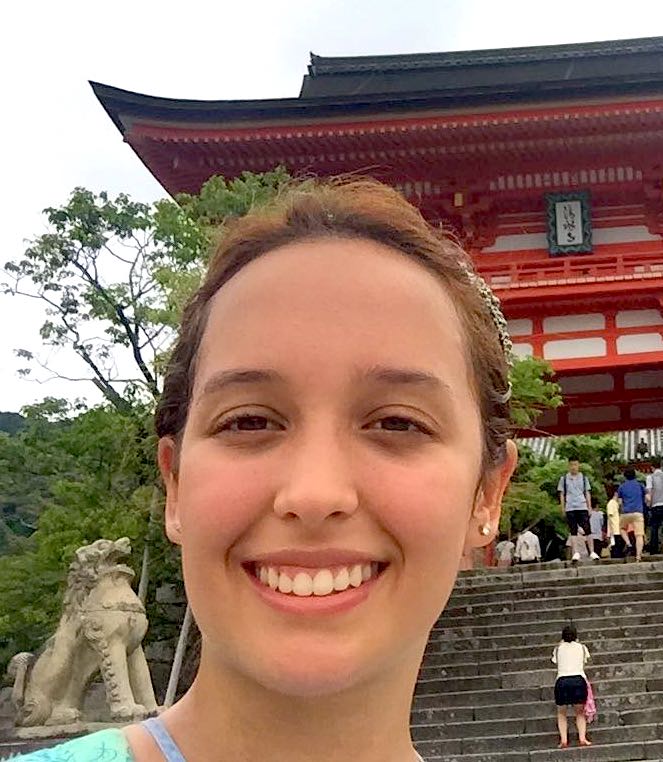
Susana Maria Hoyos Muñoz
Colombia
EAFIT (Escuela de Administración y Finanzas y Tecnologías) University

Hsin-Yu Chen
Taiwan
National Cheng-Kung University
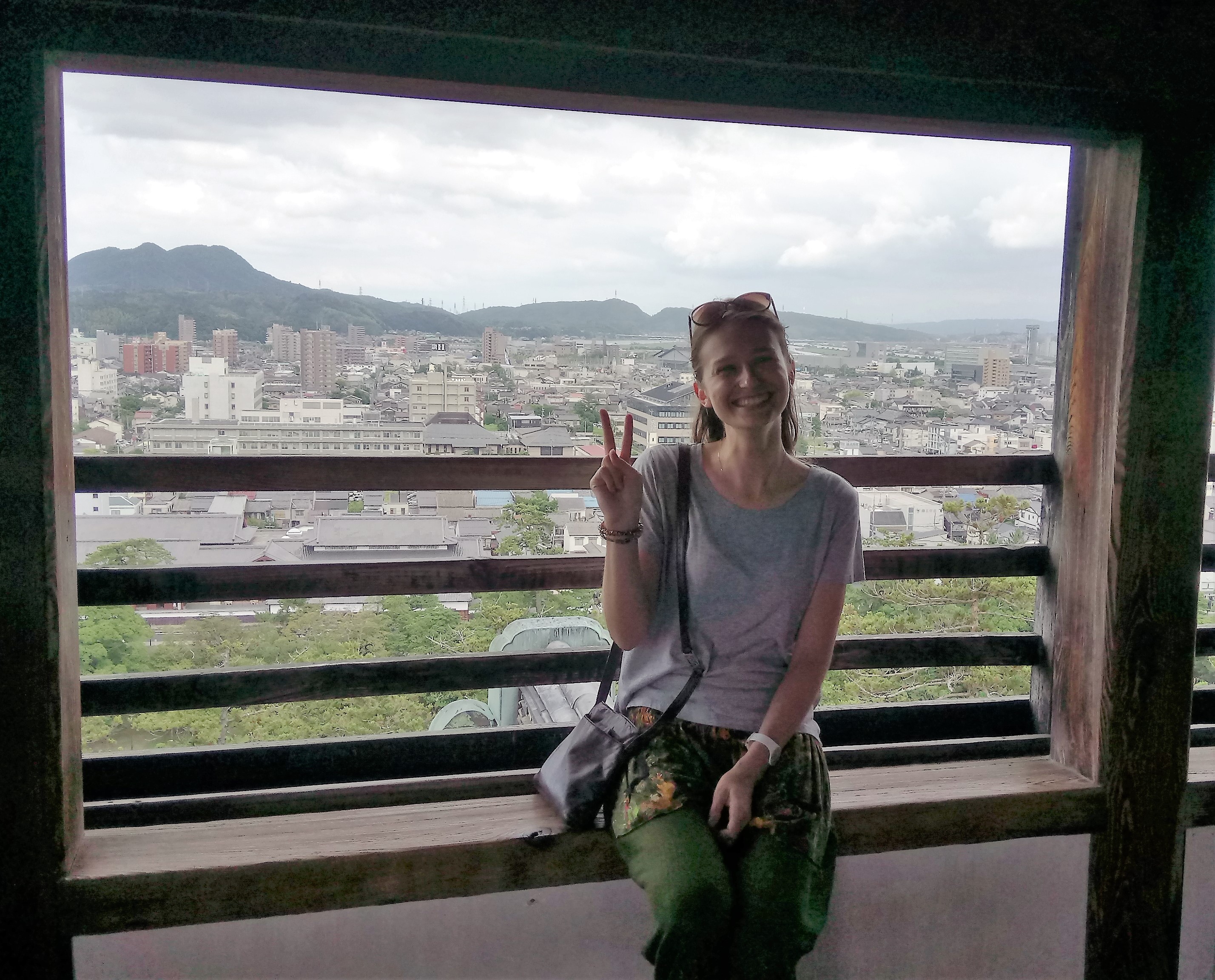
Katarzyna Liszewska
Poland
University of Warsaw
Project Summary: Abstract
The 2017 MISIP internship program focused on analyzing three eucrite meteorites (Juvinas, Camel Donga, and Millbillillie) believed to be from the asteroid 4-Vesta. This study was completed in order to analyze and compare these three meteorites in order to determine how they originally formed, and gain a better understanding of the igneous and post-igneous processes on their parent body. The eucrites examined in this study are compositionally similar to terrestrial basalts and are believed to have originally crystallized at or near surface on 4-Vesta.
The eucrites were examined by completing detailed petrographic analysis, measuring major and trace element concentrations, and determining isotopic ratios for age and source determination. Major element, trace element, and isotope ratios indicate that these three meteorites are from the same parent body and underwent similar processes after formation. Evidence of mixing and multiple reheating events can be linked to multiple and frequent impacts soon after Vesta’s formation. This indicates that impact processes played a major role in early planetary formation. The presence of silica may be indicative of hydrothermal processes on Vesta (or in transit to Earth), which has implications for the timing and distribution of water in the solar system.
